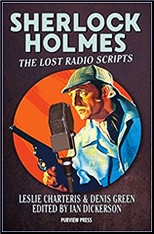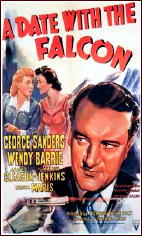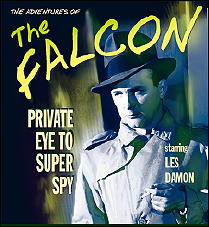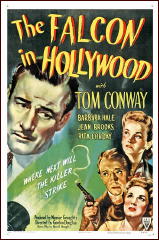FIRST YOU READ, THEN YOU WRITE
by Francis M. Nevins
Suppose all the readers of this column were gathered together in one room. At the front, standing before the lectern or podium or whatever the hell you call it, I pose a question: Any of you know something about Tom Everitt? Almost everyone in the room would probably answer: “Tom Whoveritt?†Perhaps one or two who had read my book THE ART OF DETECTION and were blessed with a photographic memory might say: “Wasn’t he the guy who provided the plots for Manny Lee to turn into Ellery Queen radio scripts after Fred Dannay dropped out and before Anthony Boucher came aboard?â€

Indeed he was. But aside from that fact, and the titles of more than thirty EQ scripts that were based on Everitt plot synopses, virtually nothing is known of him. While working on THE ART OF DETECTION I had ransacked the Web looking for a little more information about this mystery man but with no luck. Then out of the blue not long ago I received an email from a total stranger who, in the course of researching something else entirely, had unearthed more information about Everitt than I could have used even had I known of it in time to put it in the book. But there’s no reason I can’t summarize it here. Thank you, Jonathan Guss, for making this month’s column possible.
John Thompson Everitt, whom I’ll call JT just to make things simple, was born in Yonkers, New York on December 11, 1908. His ancestors had arrived in Massachusetts by 1643 and had settled in the New York City area near Jamaica by 1650. JT’s father, Charles Percy Everitt (1873-1951), was a well-known rare book dealer, and Charles’ brother Samuel Alexander Everitt (1871-1953) was a partner in the Doubleday publishing house until his retirement in 1930. JT’s older brother Charles Raymond Everitt (1901-1947) also went into the publishing business, working at Harcourt Brace and later, until his early death, at Little Brown, the publisher of a volume of memoirs by his and JT’s father (THE ADVENTURES OF A TREASURE HUNTER: A RARE BOOKMAN IN SEARCH OF AMERICAN HISTORY, 1951).
In 1930 JT graduated from Yale, where he was known as a soccer player. A year later he was hired by the CBS radio network to write for its March of Time program. By 1940 he had moved into the advertising side of radio at the Young & Rubicam agency where, among many other jobs, he was tasked with handling a prospectus from the NBC radio network on The Green Hornet, for which NBC was seeking a sponsor. Apparently he was still working at that agency when he became involved with the Ellery Queen series.
Since its debut in June of 1939, every one of the scripts for the series had been written by Manfred B. Lee based on plot synopses prepared by his cousin and EQ collaborator Fred Dannay. (More precisely, every one except “The Dauphin’s Doll,†first broadcast around Christmastime 1943 and written by Manny alone.) Early in 1944 Fred’s wife was diagnosed with cancer. The burdens of taking care of two young children, plus editing a large annual anthology of short mystery fiction and running Ellery Queen’s Mystery Magazine (EQMM), which had been launched in the fall of 1941, soon made it impossible for Fred to continue coming up with a plot a week for the radio series.
He was several synopses ahead when he dropped out, and Manny squirreled these away for use in emergencies, relying most of the time on recycling earlier scripts under new titles and condensing 60-minute scripts from the show’s first season (1939-40) into its current half-hour format. But these ploys couldn’t go on indefinitely. Somebody had to be found to take over Fred’s function.
How TJ came into the picture remains unknown. Possibly it was through his older brother Charles, who was working at Little Brown, publisher of the Queen novels and anthologies since 1942. Perhaps it was due to the connections Fred and Manny had retained with the advertising and publicity businesses where they’d gotten their start. Whether he was the first man brought in to assume Fred’s function as plot provider remains unclear.
We don’t know exactly how many Dannay synopses Manny had in reserve, but several of the episodes dating from late 1944 strike me as too outrageous to have stemmed from Fred. Take, for example, “Cleopatra’s Snake†(October 12 & 14, 1944). As backstage observer of a live production of Antony and Cleopatra for experimental TV, Ellery becomes a key witness when the genuine poisonous snake being used in the death scene (yeah, right) bites to death the actress playing Cleopatra.
Now let’s consider “The Glass Sword†(November 30 & December 2, 1944), in which Ellery tackles the case of the circus sword swallower who died when the sword in his stomach broke while the lights were out. Was it Everitt who cranked out the synopses that Manny turned into these scripts? Was it another Dannay substitute? Or, wacko though they are, could they have originated with Fred after all? For more information, keep reading.
The earliest EQ script that we know came from a synopsis by Everitt was “The Diamond Fence†(January 24, 1945), which involves the murder of a middleman for stolen gems and the disappearance of five diamond rings from the scene of the crime under impossible circumstances. A substantial excerpt from this episode survives on audio as a “sneak preview†from the Armed Forces Radio Service.
From that point at least through the end of March, every script Manny wrote was based on Everitt material. It was during these early months of the last full year of World War II that Manny enlisted Anthony Boucher (1911-1968) to take over Everitt’s function. It was an ideal choice. Boucher had already published seven novels in the Queen vein and had had short stories published in EQMM. Also, as we know from comments in various of his mystery reviews for the San Francisco Chronicle, he was an enthusiastic fan of the radio series.
Since Tony lived in Berkeley, California and Manny on the east coast, collaboration on EQ radio scripts required vast correspondence between the two. This correspondence, archived at Indiana University’s Lilly Library, documents their work together in microscopic detail. The only aspect of it that concerns us here is Manny’s continual snarky remarks about Everitt, of which I’ll quote a few.
On May 3, 1945, about six weeks before the broadcast of the first Boucher-Lee collaboration, Manny tells Tony that he’s “washed up†with Everitt, who “will do four more for us, and then he’s through. This by mutual agreement.†On the 17th of the same month, he says: “We want to avoid some of the weaknesses resulting from our present man’s so-called efforts….†And on the 24th he lets Tony know how he really feels about Everitt: “….At the end of our association with our ‘man,’ as I like to call him—hating his smug, treacherous guts as I do!—we’re finding more trouble…and sloppier submissions on his part even than usual….â€
On January 24, 1946, he describes one of the Everitt synopses he had to deal with as “a bad outline which I bought only because I was desperate …and bought and paid for it with the mental reservation that I’d probably have to do a thorough re-working job on it. I was a noble prophet.â€
But, simply because the EQ radio formula was so complex and demanding and Boucher with all his other commitments couldn’t conjure up a new plot synopsis on a weekly basis, Manny was forced to make further commitments to Everitt. “This was a desperation move,†he tells Boucher on October 30, 1946, “as his stuff always gives me headaches, but good….I had to do something in self-protection. I heartily wish now I hadn’t made that commitment…. But it can’t be undone and I can only hope that he doesn’t come through, so that I can order more from you.â€
Almost a year later Manny is still reluctantly dealing with Everitt now and then and, in a letter to Fred Dannay dated November 4, 1947, griping about it just as loudly. Discussing the possibility of repeating some of the scripts based on Everitt synopses, he describes Everitt as “such a son-of-a-bitch that, even though our rights to repeat the material without payment are clear, he would raise a considerable stink in the business if we didn’t pay him an extra fee….[F]or the most part he got tremendously overpaid in the original payment—the bulk of the creative work was done by me, out of sheer necessity.â€
If Manny were to offer a token fee of perhaps $50 per episode recycled, Everitt “would start haggling and chiseling and his tongue would wag plenty in the business….†What business Manny is referring to becomes clear later in the same letter. “[Y]ou don’t know…what that bastard has been saying and is still saying in the advertising business about his ‘part’ in the Queen show. There is no protection against his kind of conscienceless and unscrupulously shrewd self-propaganda….â€
As his correspondence with both Fred and Boucher demonstrates, at least during the radio years Manny was a Type A personality with a genius for getting hot under the collar, and the insane pressure of putting out a program every week probably shortened his life.
Whether he was being too harsh on JT is hard to judge. One of the few living persons to have seen any of the Everitt material Manny turned into scripts is Ted Hertel, who helped choose the scripts included in THE ADVENTURE OF THE MURDERED MOTHS (2005). In connection with that project he was erroneously sent the synopses for “The Right End†and “The Glass Sword,†both with Everitt’s name on them.
To judge by Ted’s comments, what Everitt gave Manny to work with was just as bad as Manny said it was. In an email to me he described the synopses as “so poorly written, so amateurish, that they could not possibly have been the work of Manny in any form.†(The scripts Manny based on these synopses were broadcast respectively on November 16 and 30, 1944.)
Only one episode Manny based on an Everitt synopsis is available on audio. In “Number 31″ (September 7, 1947) Ellery tries to crack the secret of international mystery man George Arcaris’s success at smuggling diamonds into the Port of New York and to comfort a wonderfully dignified black woman by solving the murder of her son, the servant for a wealthy man-about-town. The cases seem unconnected until Ellery discovers the number 31 popping up in both.
It’s an excellent episode, but how much credit should go to Everitt remains a mystery since no one in the last 70 years has seen his synopsis. I wouldn’t be surprised if the black woman was entirely the creation of the staunchly liberal Manny Lee.
To the best of my knowledge the only Everitt radio work besides his EQ plots was a single script for The Shadow. In “The Creature That Kills†(January 6, 1946) Lamont Cranston, alias The Shadow, investigates the theft of priceless papers from the 20th-floor laboratory of a brilliant young scientist under impossible circumstances.
It turns out that the thief, a master criminal with a Sydney Greenstreet voice, had an accomplice in the form of a trained 27-foot python which slid down the side of the building from the window directly above the scientist’s lab, got hold of the papers, then slid back up the wall to its master. What a snake! Do I detect here the same kind of wackiosity that pervades the EQ scripts about Cleopatra and the glass sword?
In 1947 Everitt returned to radio full-time as Eastern program manager for the ABC network. We don’t know if he wrote any more for the medium, but Jonathan Guss mentions one script he contributed to the golden age of live TV drama, “Revenge by Proxy†(Colgate Theatre, May 14, 1950). The cast included Nancy Coleman, Phil Arthur, Bernard Kates and Victor Sutherland. As chance would have it, the following week’s drama, “Change of Murder,†was based on a short story by Cornell Woolrich.
Everitt died on November 2, 1954, at age 45. Today he seems to be totally forgotten, perhaps deservedly so. The most that can be claimed for him is that he figures as a footnote in the Ellery Queen story. But at least now that footnote has been written.




